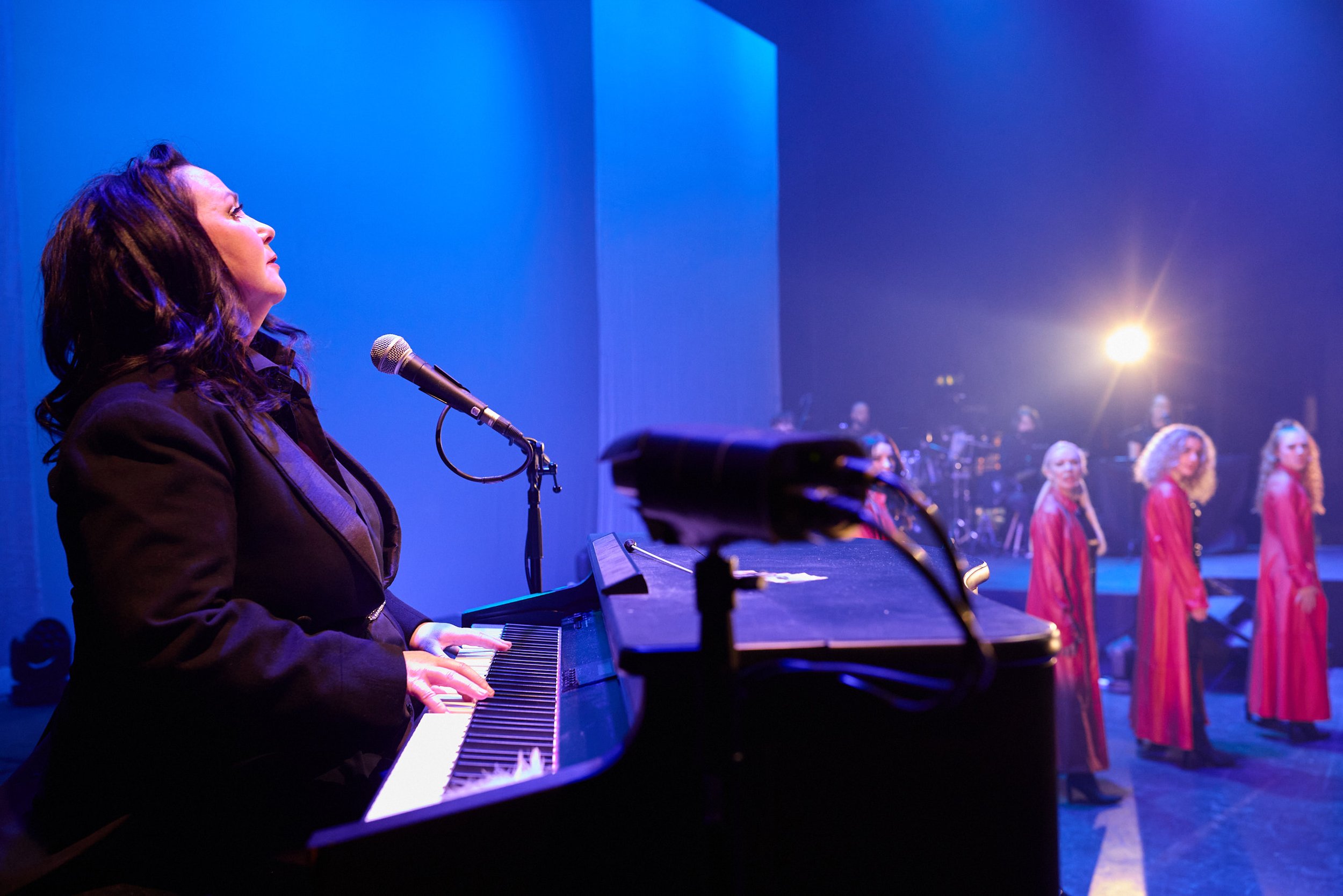REVIEW | Burns, Edinburgh Playhouse
★★★
Reviewer - JACQUELINE
*Disclaimer: AD | Gifted Tickets
In an industry full of smash-hit shows telling the life stories of historical figures, Tish Tindall has thrown Scotland’s national bard into the mix with her pop-rock musical Burns, which opened at the Edinburgh Playhouse on January 20th.
Robert Burns is one of the world’s most famous poets and has achieved international acclaim, but many are unaware of his artistic influences and personal story. Tindall has selected some of the most prominent elements and relationships of Burns’ life to condense into this production, which aims to encapsulate how Burns’ experiences would have differed had he been alive in the 21st century.
Elijah Aspinall conveys an intense portrayal of Burns which highlights many of the challenges he faced throughout his life. Aspinall performs Burns’ frustrations and numerous emotional struggles with ease, creating a depth to the character that goes beyond Burns’ stereotypical image as nothing more than a womaniser.
Tish Tindall takes on the role of the Narrator, as well as writing and composing this production. The Narrator frequently offers guidance to Burns, though he pays her no heed. Tindall’s rich vocals and maternal nature provide a necessary contrast to the more frantic and quick paced words of Burns.
Lucy Tindall (Meg O’Shanter and others) and Bryony Munro (Jean Armour and others) portray some of Burns’ most important relationships, and each actress performs their musical numbers with ease. Elizabeth McNally (Agnes Burns) presents the role of Burns’ mother with a loving touch, though she too has moments of turmoil which allow her to convey the strained relationship between herself and her son following the death of his father. McNally is easily the standout performer of this production and I would have loved to have seen more of her interactions with other characters throughout the show.
The remainder of the roles are portrayed by Diane Aspinall, Amie McWilliam, Amy Lewis, Alana Munro, Cameron Munro, Sadie Custodio, Jaymee Hannah, Evie Harrison, Julia Klis, Francesca Golding-Young and Sera Golding-Young, with sleek choreography and beautiful vocals from the full ensemble. It was a bold stylistic choice to have every character onstage aside from Burns himself being portrayed by a woman and I would have loved for the production to have delved deeper into how prominent female figures in Burns’ life influenced his actions and some of his greatest work. This could also have allowed for commentary regarding how the time period in which Burns lived was so vastly different from the 21st century in which this story is set, with a particular focus on the role of women in society.
As this is a limited run, the scenic design of this production is simple but effective. The seven-piece band are onstage throughout the show, creating some moments of interaction with the cast. The rest of the staging is conveyed through lighting changes and a coloured backdrop, allowing the writing to speak for itself without distraction. The costumes have been carefully selected and the ensemble change characters smoothly and clearly with the switch of a jacket or accessory, allowing for some more subtle moments in such a fast-paced and busy performance. One particularly poignant moment occurs when Burns struggles to tie his father’s tie, saying much while using no words.
Though one might expect this show to be performed using much of Burns’ own writing, Tish Tindall’s upbeat and pop-rock-inspired score uses Burns’ poetry sparingly, to great effect. Having said that, the musical highlight of the show by far is Tam O’ Shanter. Aspinall performs all 228 lines of the iconic poem with passion, with the band and backing vocals blending together seamlessly to create a moment of theatrical flair.
This production has been evolving for over thirty years before reaching the Edinburgh Playhouse and it is clear how much care has gone into developing this work. Having said that, I do wonder how well this show fares when performed to an audience who are not primarily Scottish. For the most part, the writing skims over Burns’ legacy and at many points, it conveys him as an unlikeable and irredeemable figure. For an audience who are unaware of Burns’ importance in Scottish culture, they may be unsure of why he is a character we should care about at all. Parts of the script touch on the use of Scottish dialect in the modern day and how Scottish people are often expected to adjust their accents and language to cater to English-speaking audiences. The show could have benefitted from exploring this further and looking at how Burns’ legacy is one of the key elements in ensuring that the Scots language continues to be taught today. Personally, I would have enjoyed hearing references to Burns’ lesser-known works too, rather than focusing primarily on his most well-known poems.
I have no doubt that this show has a bright future in the Scottish theatre scene and beyond, and I look forward to seeing how the production progresses in the coming years.



